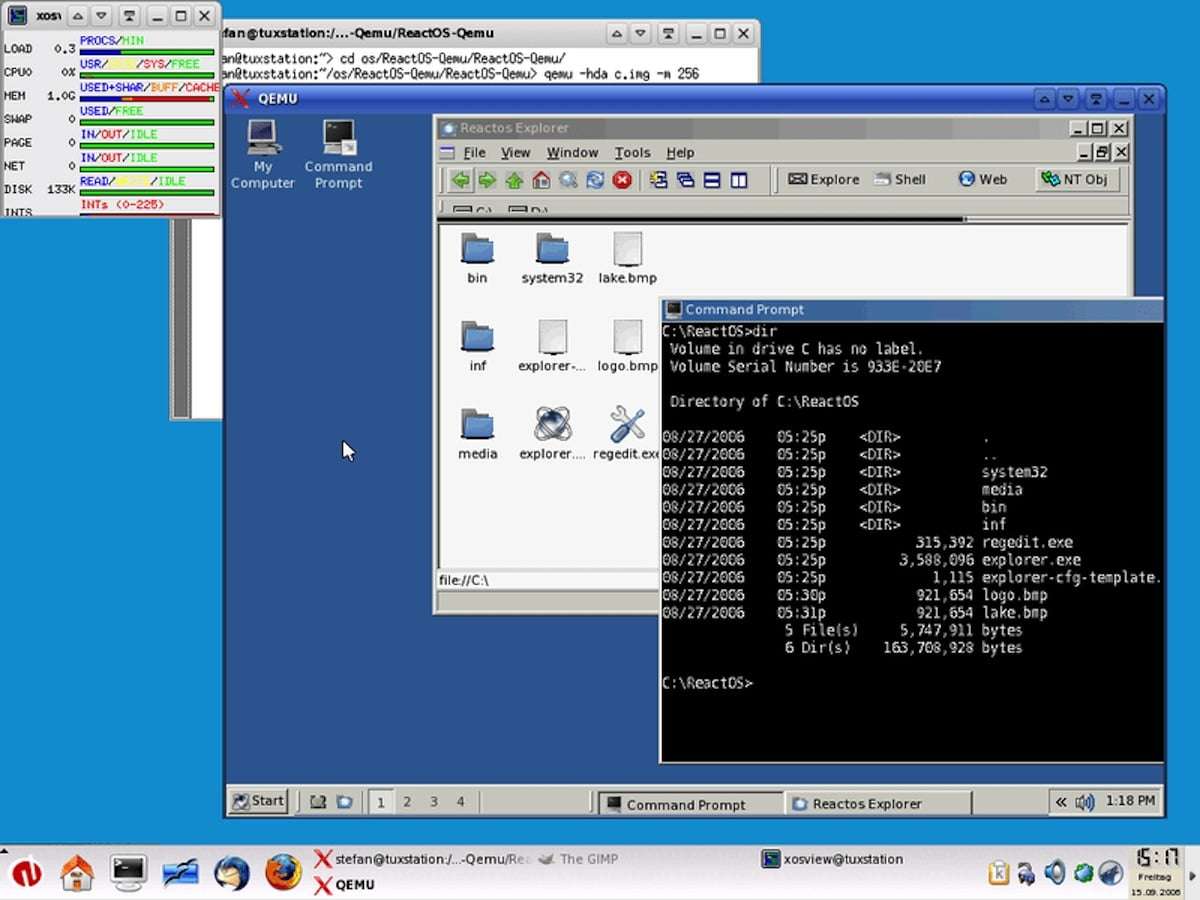Virtualization is the cornerstone of modern tech infrastructure. Without it, public clouds wouldn’t exist, cross-platform software development would be nearly impossible, and research into new architectures would take decades to progress. Within this ecosystem, QEMU has established itself as one of the most influential components for a key reason: it is open source, free, and community-driven.
With the release of QEMU 10.1, the project makes a significant leap by integrating next-generation security technologies like Intel Trust Domain Extensions (TDX), notable improvements in RISC-V and ARM, and a broad array of optimizations in migration, compatibility, and hardware emulation.
This new version reaffirms why QEMU not only competes with major commercial players like VMware ESXi, Microsoft Hyper-V, and Oracle VirtualBox, to many times surpasses them in flexibility, supported architectures, and speed of innovation adoption.
QEMU 10.1: Key Updates
- Support for Intel TDX and AMD SEV-SNP in KVM: enables creation of virtual machines with trusted isolation and advanced memory encryption, crucial for high-security cloud environments.
- RISC-V and ARM improvements: support for new vector instructions, emerging CPUs like Kunminghu, and support for boards from manufacturers such as NVIDIA, Meta, and Analog Devices.
- Enhancements in VFIO and migration: support for multifd on AArch64, RDMA migration optimizations with IPv6, and reduced downtime during live migrations.
- Networking and graphics optimizations: improvements in NBD over Unix sockets, GTK scaling, refinements in SPICE and VNC.
- Extended compatibility: from LoongArch to s390x, including niche-specific machines like
max78000fthr(Analog Devices).
📖 Complete changelog: QEMU 10.1 ChangeLog.
What Makes QEMU Stand Out Among Its Competitors?
1. Open Source vs. Proprietary Models
While solutions like VMware ESXi, Hyper-V, or Parallels operate with restrictive licensing and high costs, QEMU is distributed under the GPL, allowing anyone to freely use, modify, and redistribute it. This reduces economic barriers and fosters transparency and innovation.
2. Multi-Architecture Compatibility
- QEMU emulates and virtualizes a variety of architectures such as x86, ARM, RISC-V, PowerPC, SPARC, s390x, LoongArch, MIPS, Alpha, among others.
- VMware/Hyper-V mainly support x86_64.
- VirtualBox has limited support outside x86.
This makes QEMU the preferred tool for academic research, testing emerging hardware, and operating system development.
3. Versatility in Usage
QEMU can operate in two primary modes:
- Pure Emulator: reproduces architectures different from the host, essential for cross-platform development.
- Accelerated with KVM: delivers near-native performance on Linux.
No other competitor combines these scenarios with such flexibility.
4. Deep Integration with Modern Ecosystems
QEMU is the foundation of infrastructure stacks like:
- libvirt, OpenStack, oVirt, and Proxmox VE.
- Supports advanced live migration, critical in data centers.
- Incorporates cutting-edge technologies such as CXL, PCI passthrough, VFIO, and SD Express.
5. Cost and Community
- VMware ESXi and Hyper-V require licenses for advanced features like high availability, clustering, and vMotion.
- QEMU makes these functionalities accessible to any organization at no extra cost.
- The global developer community maintains a continuous update cycle, often integrating innovations ahead of commercial providers.
Quick Comparison: QEMU vs. VMware, VirtualBox, Hyper-V
| Feature | QEMU 10.1 (Open Source) | VMware ESXi | Hyper-V | VirtualBox |
|---|---|---|---|---|
| License Model | GPL (free, community) | Proprietary (paid) | Included in Windows Server/Pro | Free (limited open source, Oracle) |
| Supported Architectures | x86, ARM, RISC-V, PowerPC, SPARC, s390x, LoongArch, MIPS, etc. | Mainly x86_64 | x86_64 | Mainly x86 |
| Advanced Security | TDX, SEV-SNP, flexible isolation | vSphere Trust Authority | Hyper-V based isolation | Limited |
| Live Migration | Yes, with multifd, RDMA, postcopy | Yes (vMotion, licensed) | Yes, limited | Not natively |
| Academic/Industrial Use | Research, cloud, edge, HPC, IoT | Data centers | Business with Microsoft ecosystem | Testing labs |
| Cost | Free | High | Included (Windows license cost) | Free |
Strategic Role of QEMU in Cloud and AI Era
In a world increasingly driven by digital sovereignty and the adoption of new architectures like RISC-V, LoongArch, and ARM, QEMU holds a unique position. Governments, universities, and cloud providers use it as a neutral platform, reducing reliance on specific vendors.
Its ability to emulate hardware that doesn’t physically exist accelerates innovation: from validating new processors to testing operating systems before hardware release. This gives QEMU a value beyond commercial interests: it’s a shared, universal digital infrastructure.
Frequent Questions (FAQ)
1. How does QEMU differ from VMware or Hyper-V?
Primarily, it is open source, multiplatform, and free, unlike VMware or Hyper-V, which are proprietary and support fewer architectures.
2. Is QEMU stable enough for production environments?
Yes. It underpins professional platforms like Proxmox VE, oVirt, and OpenStack, used in thousands of data centers worldwide.
3. Does QEMU only run on Linux?
No. While it offers better performance with KVM on Linux, it also works on macOS and Windows in pure emulation mode.
4. Why is support for TDX and SEV-SNP important?
Because it enhances virtualization security by providing trusted isolation and memory encryption, key for cloud and AI deployments.
👉 With this release, QEMU not only confirms its role as the pillar of open source virtualization but also strengthens its position as a meaningful and strategic alternative to closed-source solutions.

